Beginners always find themselves in trouble due to a lack of knowledge and experience. A similar case is with plants. Here, you’ll learn about the live aquarium plant for beginners. These plants improve water quality, are easy to manage, enhance the aesthetics of the tank, etc. Cichlids are aggressive, so they need resilient plant species. Here is also a list of such plants for Cichlid. You’ll also find the beginner’s plant care sheet on the following.
Content Table
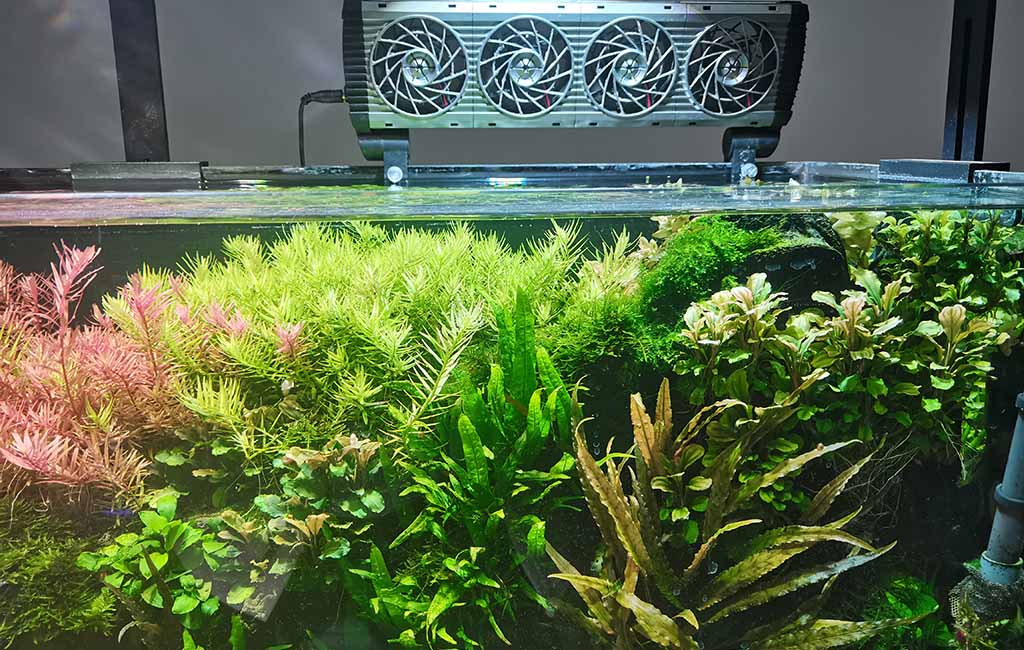
Live freshwater plants for beginners
Live Aquarium Plants for Beginners
Here are a few live aquarium plants for beginners. You’ll learn about their origin, natural habitat, growth rate, and hardiness.
Anubias
| Habitat | Grow in rivers, streams, and marshes | 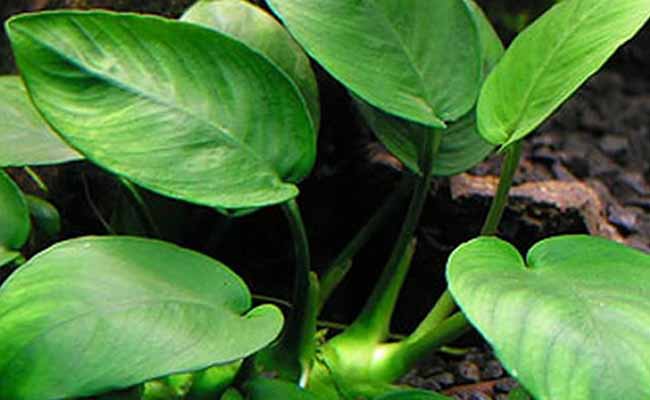 |
| Growth | Slow, 4 – 6 weeks to grow a new leaf | |
| Origin | Tropical central and western Africa | |
| Hardiness | Can adopt varying situation |
Java Fern
| Habitat | Grow in freshwater streams, attach to rocks, and roots are fully or partially submerged | 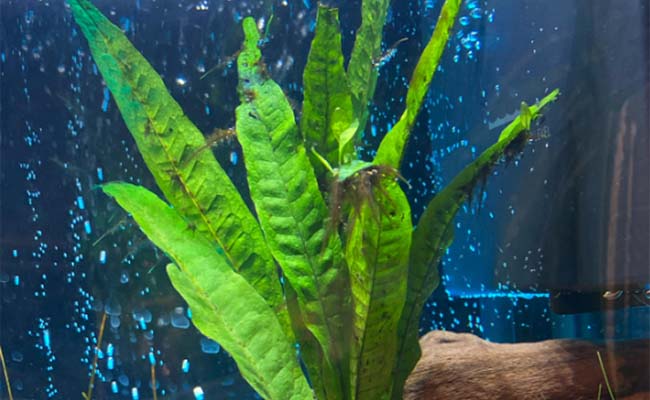 |
| Growth | Slow growth rate, take 2 to 4 weeks for germination | |
| Origin | Malaysia Thailand Northeastern India Some parts of South China |
|
| Hardiness | Hardy, can survive in various conditions |
Amazon Sword
| Habitat | Warm and nutrient-rich waters of the Amazon basin | 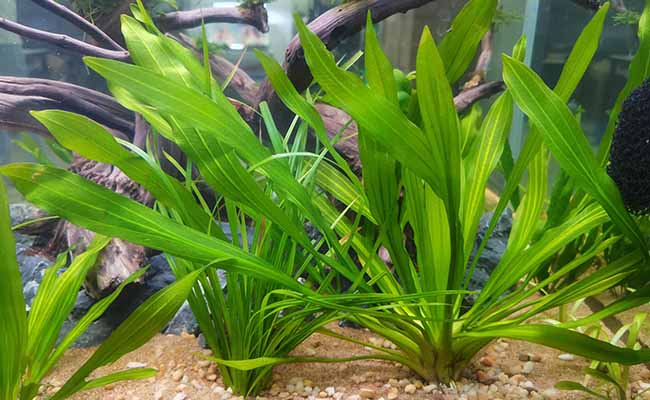 |
| Growth | High | |
| Origin | Cuba Central America Far south as Brazil and Bolivia |
|
| Hardiness | Hardy, can tolerate varying conditions |
Crypts
| Habitat | Grow in still water, swampy areas, tidal zones, flooded areas, etc. | 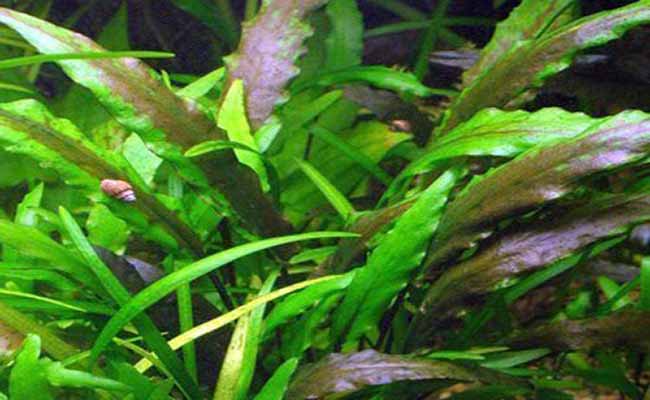 |
| Growth | Slow | |
| Origin | Tropical regions of India Southeast Asia New Guinea |
|
| Hardiness | Hardy and can tolerate a range of conditions |
Hornwort
| Habitat | Grow in various damp and shady areas. It includes Stream banks Claybanks Swampy ground Bark Farm fields and roadsides Tropical forests |
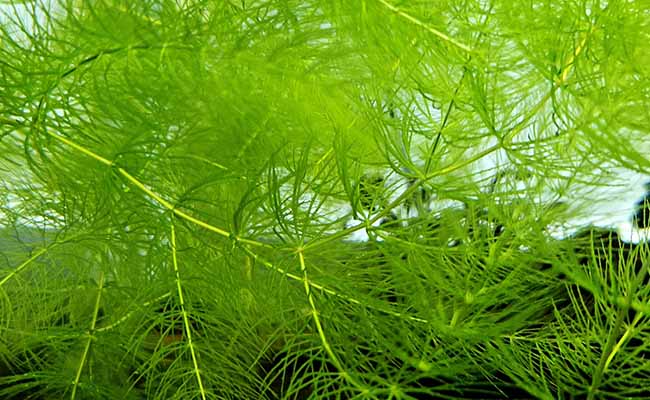 |
| Growth | It grows 1 to 5 cm per week. The growth rate depends on Light intensity Water temperature Nutrient availability |
|
| Origin | Throughout the world except Antarctica | |
| Hardiness | Quite hardy and can adopt various conditions |
Eelgrass
| Habitat | Shallow, temperate waters with soft or sandy seafloor environments |  |
| Growth | High growth rate. July is the peak growth rate month | |
| Origin | It grows throughout the world at the seashores | |
| Hardiness | It’s quite hardy as it can grow in various salinity ranges. |
Java moss
| Habitat | It grows in humid areas. Usually, it makes its base on rocks, roots, and driftwood. |  |
| Growth | Rapid growth rate | |
| Origin | South Asian native, grows in humid riparian regions | |
| Hardiness | Hardy as it can tolerate a range of water conditions. |
Buce
| Habitat | Grow on rocks and stones in streams and rivers | 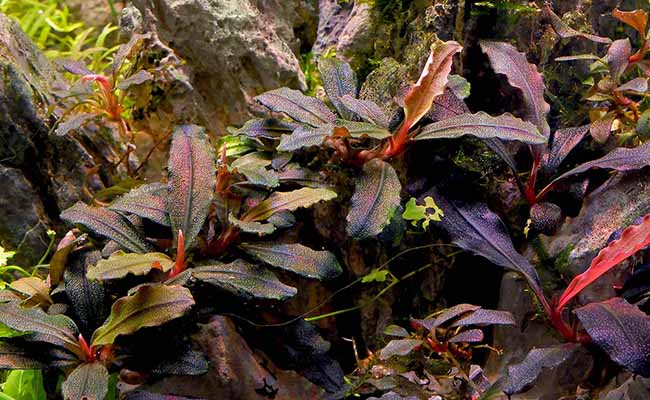 |
| Growth | Slow growth rate | |
| Origin | Moist tropical forests Borneo | |
| Hardiness | Extremely hardy |
Duckweed
| Habitat | It grows in calm water situations with low or no wind speed. Ponds/Quiet backwaters of lakes and streams/Ditches/Creeks/Marshes/Swamps. | 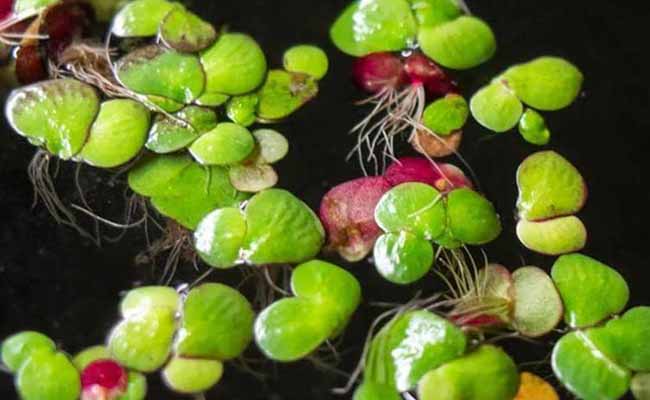 |
| Growth | It has a growth rate as it can double its mass in just 16 hours to 2 days. | |
| Origin | Native to North America but present in Africa, Asia, and Europe. | |
| Hardiness | Hardy |
Marimo Moss Ball
| Habitat | Cold lakes and rivers with moderate to high calcium rate | 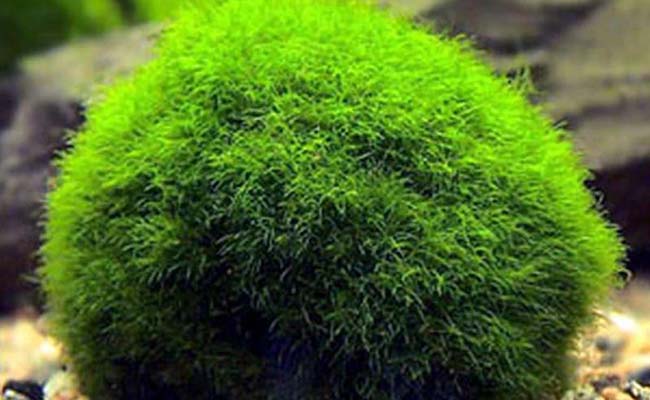 |
| Growth | Slow | |
| Origin | Cold lakes and rivers of Japan, Iceland, and Northern Europe | |
| Hardiness | Hardy |
Favorite Beginner Aquarium Plant
Remember several factors while selecting the best beginner-friendly aquarium plants. Here are some of them.
Check the light requirement, e.g., intensity, lighting hours, whether they fit with special lighting, etc. CO2 requirement is another selection parameter, i.e., whether you need to inject the CO2 or it goes well without it. Substrate type, thickness, and substrate materials are other salient aspects.
What is the growth rate, i.e., slow or fast? Plant hardiness matters a lot, i.e., whether it can resist beginner mistakes. Nutrient requirement, competition with algae, and withstanding against fish damage, i.e., nibling, uprooting, etc. Aesthetics and propagation are the other most important aspects.
By remembering all these aspects, here is a list of favorite live aquarium plants for beginners.
Java Fern
Microsorum pteropus, or java fern, is one of the top beginner-friendly aquatic plants. This Southeast Asian native requires low to moderate-level lighting. No CO2, and you can grow it on the surface of aquatic decor, i.e., wood, rock, etc. A slow growth rate with minimal pruning is another beginner-friendly aspect.
It requires off-and-on liquid fertilizer for optimal growth. It has a low susceptibility to algae. Its tough leaves make it suitable to withstand nibbling neighbors. It’s at the top of the list due to its high aesthetic appeal and easy propagation.
Anubias
Anubias barteri or anubias is another beginner-friendly option. It requires low to moderate lighting and no CO2 supplementation for optimal growth. Like the previous one, it can also grow on the decor surface, i.e., driftwood, rocks, etc. It requires minimal pruning due to a slower growth rate, i.e., new leave formed after 4 to 6 weeks.
It is hardy, adaptable to various conditions, and requires no or low nutrients. However, it has a downside, i.e., algae can grow on the leaves. Aggressive fish can live with it as it resists nibbling. It is on the list due to its easy propagation and texture and depth addition to the tank.
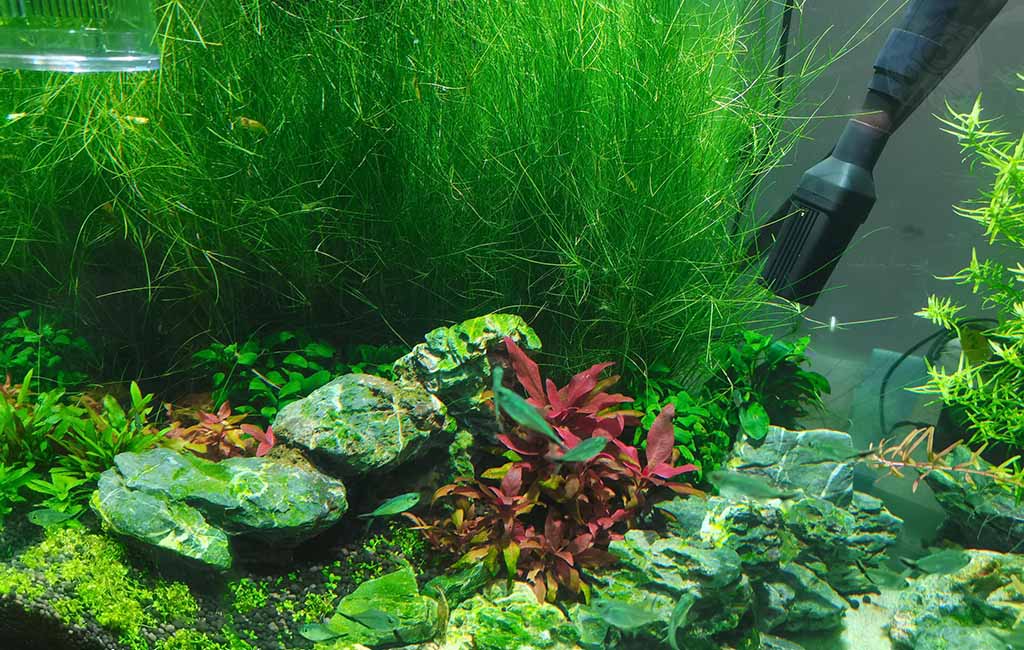
Favorite live aquarium plants
Java Moss
Another Southeast Asian aquatic plant that is well suited to beginners in many ways. Its carpet-forming ability and suitability with fry and shrimps are top qualities. Taxiphyllum barbieri requires low to moderate light, no CO2, and no substrate for optimal growth.
It requires occasional trimming. This hardy and less nutrient-required plant has an issue in that it can attract the algae in the tank. However, it’s hardy and propagates naturally via fragments. All of these aspects make it one of the beginner-friendly aquatic plants.
Hornwort
Hornwort or Ceratophyllum demersum grows in freshwater lakes, ponds, and rivers. It grows throughout the world, except Antarctica. It requires low light, no CO2, and no substrate, as it can float or anchor to anything. It has a downside that it has a high growth rate and, therefore, needs frequent trimming.
It can tolerate a range of water conditions and requires minimal nutrients. Hornwort does not attract algae, is hardy, and has higher regrowth, making it an attractive option for beginners. Stem cutting can propagate these shelter-providing plants. This feathery or floating plant is one of the beginner-friendly aquatic plant choices.
Vallisneria
Vallisneria spiralis, or Vallisneria, is another beginner freshwater aquatic plant. This grass-like plant grows throughout the world except the Arctic region. It requires low light, no CO2, needs substrate and has a fast growth rate. A fast growth rate requires frequent trimming.
It’s hardy and can tolerate low nutrient levels. However, growing it in the root tab optimizes the growth rate. It doesn’t invite algae in the tank and is tough enough to withstand nibbling or fish uprooting. Vallisneria propagates through runners and creates a natural grassy effect in the tank.
Cryptocoryne Wendtii
Cryptocoryne Wendtii is a Sri Lankan original freshwater aquatic plant. It usually grows in slow-moving rivers and streams. It is suitable for aquascaping due to its shade of green and brown. It requires low light, no CO2, nutrient-rich substrate, and low maintenance due to a slow growth rate.
It’s hardy, but avoid sudden changes as it’s sensitive to sudden changes. In case of poor substrate, grow in nutrient root tabs. It melts but regrows, and it doesn’t attract the algae. It propagates through runners. These attributes make them beginner-friendly aquatic plants.
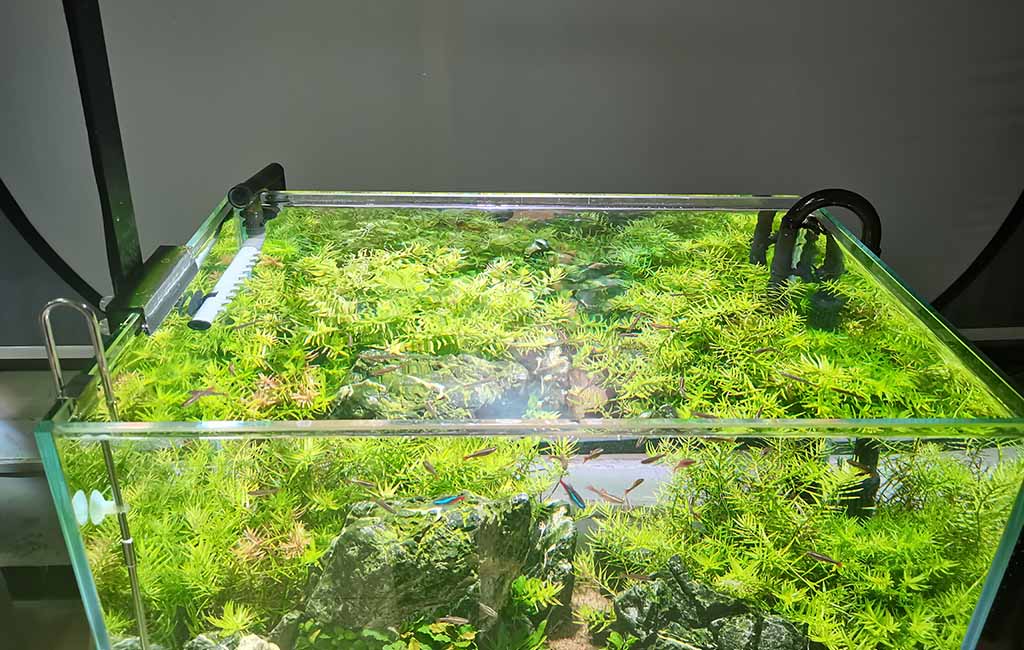
Aquarium plants for beginners
Dwarf Sagittaria
North and South American aquatic plant Sagittaria subulata is another suitable choice for beginners. It is one of the most suitable options for freshwater setups because, in the wild, it grows in freshwater streams and lakes. It requires moderate to higher light, no CO2, and sand or gravel substrate.
Dwarf Sagittaria shows a moderate growth rate. Therefore, frequent trimming is required.
It’s hardy but requires a nutrient dose. Although it’s not necessary, but suitable dose improves its growth. It is free from algae vulnerability is resilient to violent neighbors and propagates through runners. Its carpet-like growth makes it attractive for beginner’s tanks.
Marimo Moss Ball
Aegagropila linnaei is the scientific name of this Northern Hemispheric aquatic plant. It grows in a compact form, like a green ball, and requires low to moderate light, no CO2, and no substrate. Marimo moss ball grows extremely slowly, so frequent maintenance is not required. It has a hardy nature and requires minimal nutrient dose.
It is damage-resilient and smooths tank cleaning, i.e., its compact shape. Over time, it slowly divided and propagated through the divisions. Its unique aesthetic proposition and decorative aspects are a few key features that make it beginner-friendly.
Duckweed
Lemna minor is the scientific name of this beautiful, beginner-friendly aquatic plant. It grows throughout the globe and requires low to moderate light, no CO2, and no substrate. However, due to fast growth, it requires occasional thinning.
It is hardy and can grow in varying conditions. Duckweed absorbs nutrients from water, so no fertilization is needed. It helps to improve the water quality, provide shelter to fish, and enhance the tank’s aesthetics.
Water Sprite
Ceratopteris thalictroides is the scientific name of this beginner-friendly aquatic plant. Tropical and subtropical regions, i.e., Asia, Africa, and Australia, are the native regions of this plant. This delicate, fern-like frond plant requires low to medium light, no CO2, and no substrate as it floats.
Water sprite keeps the beginner on stand-by mode as it requires frequent pruning due to the high growth rate. It thrives in various conditions and requires minimal nutrients. This lush and bushy plant gives shelter to the fish. All of these aspects make it suitable for beginners.
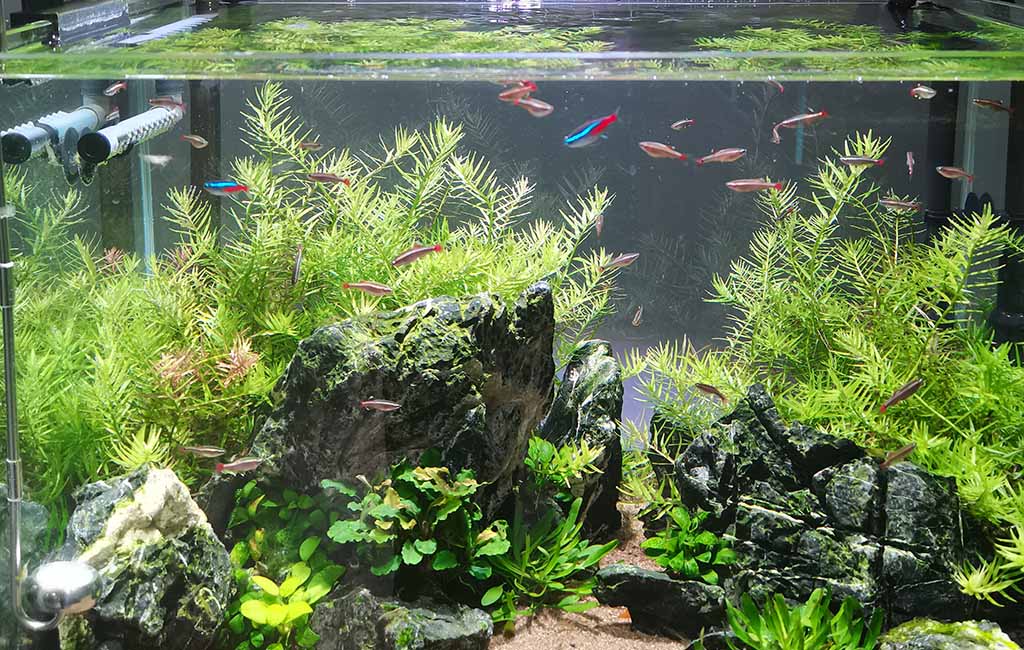
Freshwater Beginners Aquarium Plants
What Are Some Plants That Go Well in a Cichlid Fish Tank?
Plants in cichlid tanks are short-lived due to their aggression. They nibble the leaves and uproot the plants due to their aggressiveness. Therefore, it is required to grow some special hardy and hard leave plants that can regrow as well. Here is the list of such plants, with their short care guide.
Anubias
| Why Suitable | Hard to nibble due to thick and tough leaves growing on rocks or driftwood surface | |||
| Care | Light | Temperature | pH | Pruning |
| Low to moderate | 20–28°C | 6.5–8.5 | Frequent | |
Vallisneria
| Why Suitable | Hardy Fast-growing Quick recovery after uprooting Tough to nibble the hard leaves |
|||
| Care | Light | Temperature | pH | Pruning |
| Low to moderate | 20–28°C | 6.5–8.5 | Frequent | |
Cryptocoryne
| Why Suitable | Strong roots that resist plant uprooting Adapt varying conditions |
|||
| Care | Light | Temperature | pH | Pruning |
| Low to moderate | 20–28°C | 6.5–8.5 | Frequent | |
Java Fern
| Why Suitable | Tough leaves No need for substrate |
|||
| Care | Light | Temperature | pH | Pruning |
| Low to moderate | 20–28°C | 6.0–7.5 | Slow | |
Amazon Sword
| Why Suitable | Strong roots
Strong leaves and resistance against uprooting |
|||
| Care | Light | Temperature | pH | Growth rate |
| Moderate to high | 22–28°C | 6.5–7.5 | Occasionally | |
Java Moss
| Why Suitable | Grow on decor, so no uprooting chance Fast recovery from the damage |
|||
| Care | Light | Temperature | pH | Pruning |
| Low to moderate | 20–30°C | 6.0–7.5 | Frequent | |
Bolbitis
| Why Suitable | Tough leaves No need for substrate, so there is no uprooting |
|||
| Care | Light | Temperature | pH | Pruning |
| Low to moderate | 20–28°C | 6.0–7.5 | Occasionally | |
Crinum calamistratum
| Why Suitable | Long and tough leaves to avoid nibbling Slow-grow bulb plant so no uprooting |
|||
| Care | Light | Temperature | pH | pruning |
| Moderate to high | 22–27°C | 6.5–8.5 | Occasionally | |
Coontail
| Why Suitable | Free-floating Fast recovery |
|||
| Care | Light | Temperature | pH | Pruning |
| Low to moderate | 18–30°C | 6.0–7.5 | Frequent | |
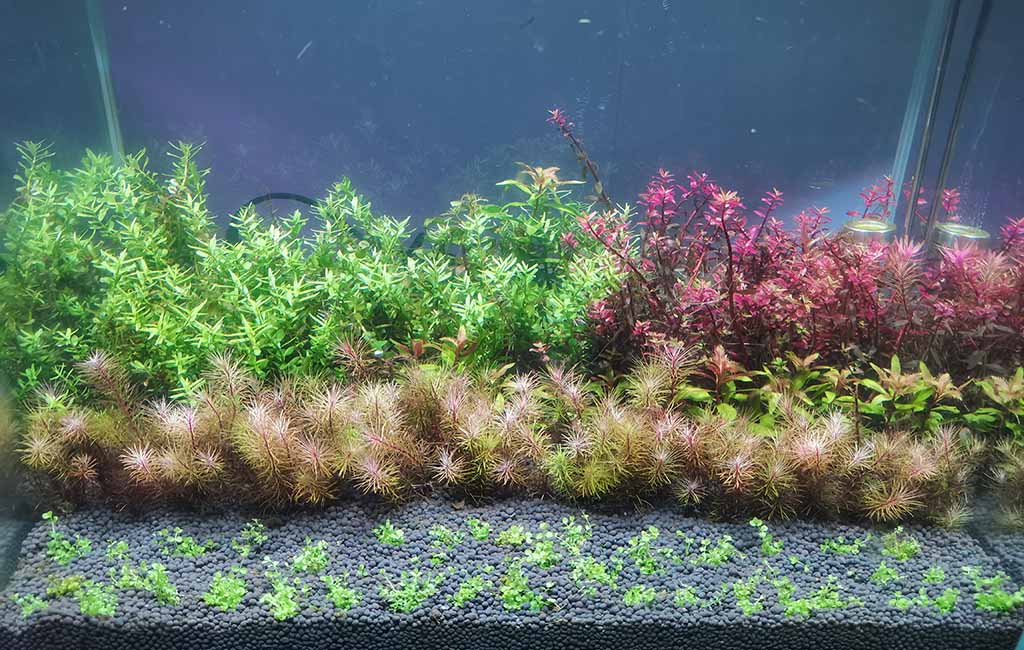
Live aquarium plants for beginners
Aquarium Plants Care for Beginners
Beginners should focus on a few care aspects. If they follow it, they will see happiness in the tank. Here is a common care sheet for the beginners.
| Aspect | Detail | Tips |
| Light | Provide low to moderate light as most beginner plants require it, i.e., 1 or 2 watts per gallon | Use LED or fluorescent tubes
Avoid turning it on all day as it can bloom algae in the tank |
| Substrate | Use nutrient-rich aqua soil. You can also go with rock or soil with root tabs. | Use root tabs for more nutrient-required plant |
| Fertilization | Use liquid fertilizer | Apply fertilizer once a week and avoid over-application |
| Water Parameters | Maintain temperature, pH, and hardness | Test the water parameters regularly to avoid fluctuation |
| Pruning | Remove dead leaves and cut unwanted bark from the plant | Use a sharp and quality tank maintenance kit, i.e., sharp scissors, etc. |
| Algae Control | Avoid excessive hour-lighting | Only light on for 6 to 8 hours and introduce algae eaters. |
| Compatibility | Select the plants according to your tank parameters and fish compatibility | Grow hardy plants |
| Common Issues | Yellowing leaves indicate a nutrient deficiency | Apply nutrients to the plants. |
| Melting often happens due to water changes | Just wait for the recovery |
The Last Word
Live aquarium plants for beginners should be hardy, low maintenance, etc. Such plants include anubias, java fern, java moss, etc. While cichlid tanks require such plants that can withstand their aggression and fastly recover from the damage, e.g., vallisnera, amazon sword, Bolbitis, coontail, etc. are such plants. Aquarium plants for beginners don’t require much care. However, you should maintain the light, substrate, nutrient level, pruning, etc. for optimal plant growth.
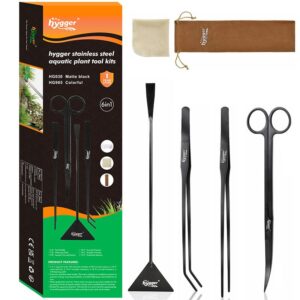
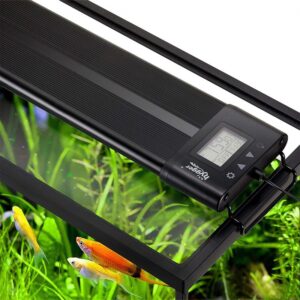
Leave a comment